Many people look at the benefits of SEO and wonder how optimising web content for human visitors and search engines could possibly bring so much value. But once you know how SEO works, it’ll all make sense. Read this article or listen to the audio.
Topics covered
An overview of how SEO works
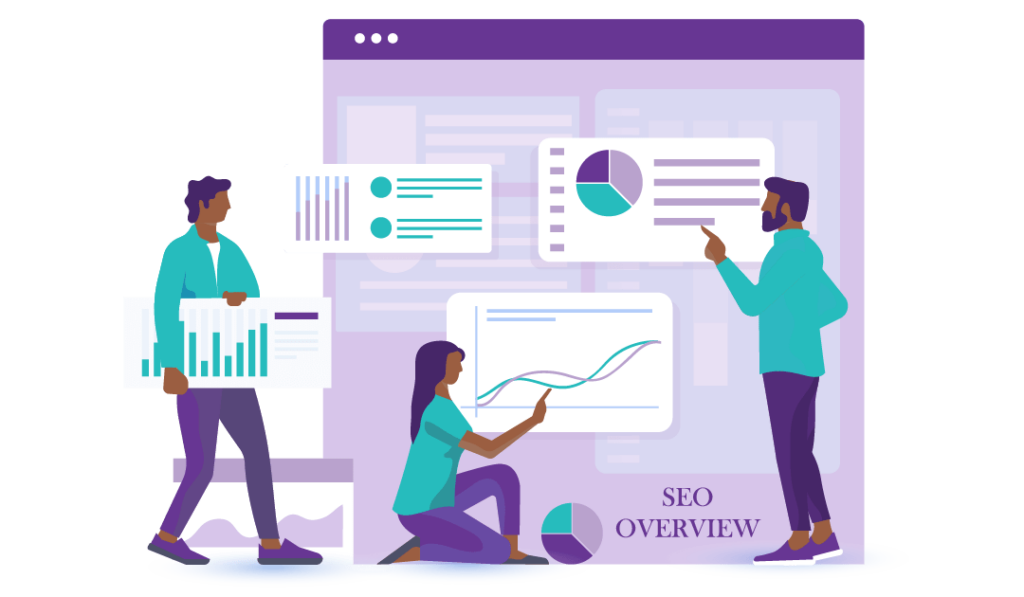
Broadly speaking, SEO works by improving organic search performance. That is, it helps content show up higher in search results
That’s important because 31.7% of search traffic goes to the first piece of content that shows up in the non-paid search results, and searchers are 10 times more likely to click on that first search result than the 10th search result. Once you go beyond the first 10 search results, less than 1% of searchers will click through to view your content.
As Ignite Visibility says, “consumers are using search engines, and if you want them to find you, you need to rank high.”
But that’s not all it does. For instance, when a whole website has been properly optimised for search engines, it also ensures the ideal visitors have a great experience on the site.
When you do SEO well — your content shows up earlier in search results and your audience enjoys consuming your content — the flow-on effect is:
- More people visit your content. And the people visiting your content are more likely to be the people your products and services are best able to help (and so they’ll be more likely to consider making a purchase from you).
- The people visiting your content form a good impression of your brand and they come to trust you.
- More people have the opportunity to view the high-converting sales messages on your site.
- More people buy at least one product or service from your site. Or they click on at least one affiliate link or sponsored ad on your site.
- You have the opportunity to encourage repeat purchases.
- Your revenue is higher. And depending on the marketing you were doing before, your costs may be lower.
Of course, the question is, how does SEO work to increase search rankings?
How SEO works to increase search rankings

In order to understand how SEO works to increase search rankings, you first need to understand what Google and other search engines are aiming to achieve.
Most search engines make money by selling ads. The people buying the ads do so because they believe that lots of people use the search engines and will therefore see the ads they’re paying for. So in order for search engines to make money from ads, they need to ensure they have a constant stream of people conducting searches on their platform.
The way search engines ensure they have plenty of users, is to make sure their search results adequately ‘answer’ the queries of the everyday people that are their users.
Many of the SEO resources you’ll come across will talk almost exclusively about Google. That’s because Google holds by far the biggest share of the search market (93% at the time of writing). But there are many search engines out there all competing for the attention of internet searchers, so they can take a slice of global ad revenue. And in order to remain competitive, search engines are constantly trying to improve the value of their search results to their users.
Providing the best value to search users means displaying search listings for the content that best addresses the users’ queries in terms of providing the information they want in an easily accessible format. If the content is also entertaining or engaging in some other way, so much the better.
To do this, search engines scour the internet looking for new content and updates to existing content. (This is called ‘crawling’.) They then assess each piece of content in an effort to figure out what the content is about and whether it provides a good experience for people when they consume it. This enables search engines to do two things:
- They can categorise the content so they know which search queries it could answer
- They can rank the content so they can display the content in order of most to least likely to satisfactorily resolve the search query
One of your jobs as a content creator or publisher is to craft and display online content in such a way that search engines realise your content is a great fit for relevant questions that people are asking. This is the first way in which SEO works to improve search rankings.
Once search engines start displaying a piece of content in their search results, they also monitor its performance. When a lot of search users click on a piece of content, that sends the search engine a signal that the content is likely to be a good fit for that particular search query, so the search engine will increase the content’s ranking. When not many people click on a piece of content, its ranking will be downgraded.
When lots of people click through to visit a piece of content and then hit the ‘back’ button to return back to the search results soon after opening the content, that also signals to search engines that the content isn’t a good fit for the searchers’ query and so the ranking will be lowered. If users don’t come back to the search results, that signals to the search engine that its users found what they were looking for and so the ranking will be increased.
As a result of all that, another of your jobs as a content creator or publisher is to maximise the chance that a search user will click on the search listing for your content and minimise the chance that the visitor will then click back to the search results.
There are three key ways you can successfully fulfil those two jobs.
Authority — The first thing you have to do is prove that you’re an authority on the topic your content relates to, so your visitors and all those search engines know you know what you’re going on about. (There’s nothing worse than listening to someone who’s full of confidence about the topic they’re discussing only to find out they don’t actually know anything about it at all.)
When you successfully demonstrate your authority, search engines will rank your content more highly and visitors will be more likely to consider their queries solved after having consumed your content.


Relevance — You must also show your visitors and search engines that your content is topically relevant to the search query. (After all, it doesn’t matter how good it is, if your content doesn’t provide the information the search user is looking for, it’s not useful to that search user and it’s not useful in attracting ad revenue for the search engine.)
Demonstrating the relevance of your content enables search engines to rank your content for the kinds of search queries you’re targeting, and it prevents human visitors from needing to return to the search results by resolving their queries.
Trust — And finally there’s trust, which is a little bit tricky. Search engines are machines and therefore can’t actually learn to trust or distrust sources of information. But humans can trust, and when we’re confronted by a list of search results, we’re much more likely to click through to content from publishers we trust.
If you can position yourself or your brand as a trusted source of information, more search users will click on your search listings, which will lead to an increase in search rankings. And while search engines can’t learn to trust you, they can classify your brand as more trustworthy based on how closely you’re linked to spam-free sites (or ‘trusted sites’).

SEO is used to demonstrate the authority of people and brands, prove the relevance of content, and elicit trust in both the content and the publisher of that content.
How SEO works to demonstrate authority, relevance and trust
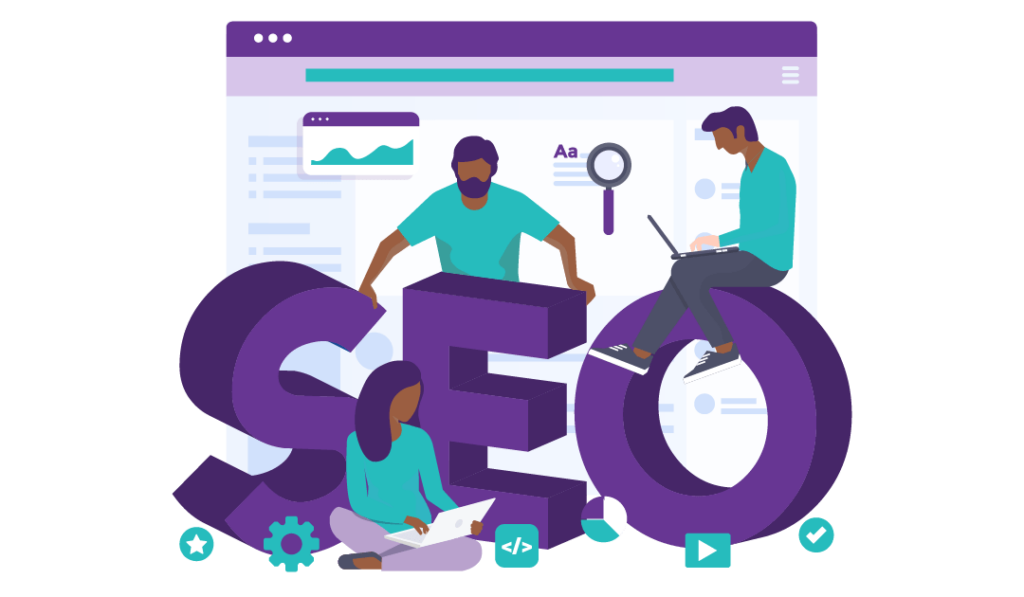
There are two main ways SEO works to achieve this seemingly mammoth task:
- Off-page SEO, which is all about optimising a website. You can conduct off-page SEO on your own website and/or blog but not anywhere else.
- On-page SEO, which is all about optimising specific pieces of content. You can conduct at least some parts of on-page SEO on any piece of publicly available online content you own, even if you can’t do anything to optimise the place the content is published.
Some people also single out things like technical SEO and local SEO as being distinct types of SEO, but in reality, these are mere subsets of on-page and off-page SEO. And while it’s helpful to break SEO down into smaller chunks when you’re learning how to use it, it’s much more difficult to understand the totality of how SEO works if you break it into too many pieces.
So, to understand, on a broad scale, how SEO works, here’s a summary of the two major branches SEO.
Off-page SEO
Off-page SEO is all about making a website easy to use.
It involves laying out and linking pages in a logical way that makes it easy for people to find the information they need. This also makes it easier for search engines to find pages and figure out how they’re related.
This is important because if humans can find the information they’re looking for, they’re not going to quickly click back to the search engine. That sends a positive ranking signal about the content to the search engine. It also means visitors will hang around on your site for longer, meaning they’re more likely to see your sales copy.
Linking pages properly is also important because search engines need to be able to find your content and understand how it relates to your other content if they’re going to start displaying that content in their search results.
Off-page SEO also involves optimising things like code and image sizes so websites load quickly.
This is important because most human visitors will leave a site if they have to wait too long for it to load. In fact, data shows, more than half of internet users will leave a site if it takes longer than 3 seconds to load. If your visitors get sick of waiting for your content to load, they’ll go back to the search results and try another piece of content, sending a negative ranking signal about your content to the search engine.
Faster loading times also mean search engines can crawl your website more quickly. This isn’t so important for smaller sites, but if you have a site with a lot of content on it, search engines won’t discover and index all of your content if it loads too slowly. And if it’s not indexed, your content won’t show up in search results.
Given the majority of web browsing is now done on mobile devices, off-page SEO also includes ensuring websites are mobile-friendly. This is important because visitors viewing your site on a mobile device will go back to the search results if they can’t use your site easily. That will send a negative ranking signal about your content to the search engine.
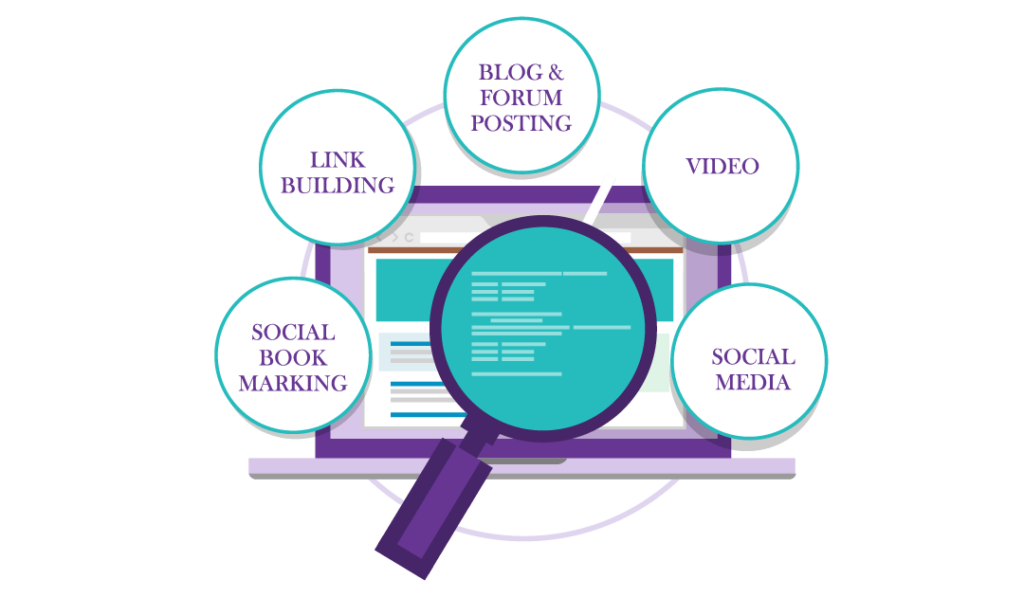
Encouraging backlinks is another important off-page SEO tactic. (A backlink is a link to your content from another website.)
Backlinks are really valuable because they can send traffic directly to your content from a wide variety of sources. This gives you an opportunity to deliver your sales messages to more people and it enables you to reach people outside of your existing networks.
Backlinks also send a ranking signal to search engines. If the backlink is from a website that has a high level of authority, relevance and trust, then the backlink will signal to the search engine that your content is more worthy of trust, that it’s relevant to certain search queries (especially those relating to the anchor text that the hyperlink is attached to — if it’s a text-based link), and that your content is valuable enough that the other website is willing to allow its visitors to click away from their site in order to visit yours.
On the other hand, if you receive backlinks from websites that have a low level of authority, relevance and trust, the backlink will send a negative ranking signal to the search engine. This is because the search engine already has a dim view of the referring domain (the website giving the backlink), and so an endorsement from that website leaves a negative impression of your site.
If that’s a bit confusing, think of backlinks like recommendations from people you know. Let’s say you’ve never bought a desk chair before but someone you respect and trust says they bought a desk chair from Shop A and loved it, and someone you think is foolish and uninformed bought a desk chair from Shop B and loved it. If a third acquaintance says ‘I need a new desk chair. Do you know anywhere that sells good ones?’, what are you going to tell them? It’s probably going to be something along the lines of ‘I haven’t bought one myself, but I’ve heard good things about Shop A.’. In this situation, you’re doing a similar thing to what search engines do.
When you put all the different aspects of off-page SEO together, they can send a powerful set of positive ranking signals to search engines, pushing your content further up the search rankings and increasing the visibility of your content in the search results.
On-page SEO
On-page SEO is all about making sure search engines and search users understand the value of a piece of content, so search engines know when it’s in their best interests to show the content in their search results and people know when it’s in their best interests to click through to consume the piece of content.
In the simplest terms, on-page SEO works by strategically placing keywords throughout a piece of content, so search engines and search users understand that the content focuses on those topics. Just as off-page SEO improves search rankings, leading to increased sales, so too does on-page SEO — it’s just that the mechanism is slightly different.
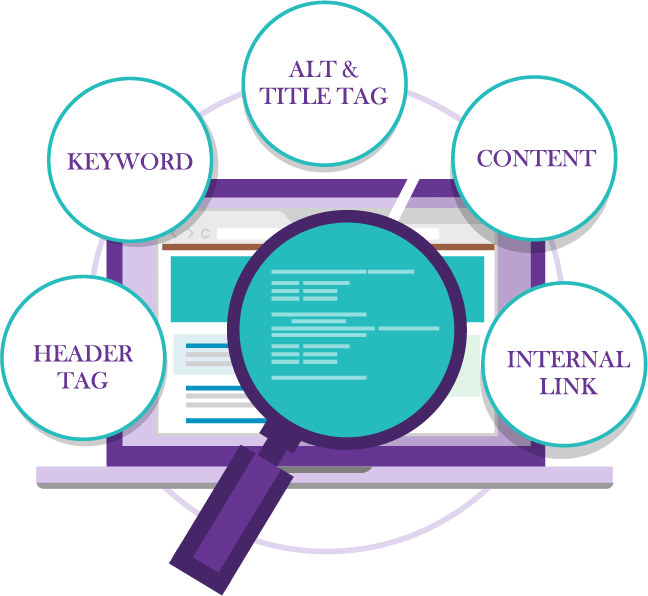
On-page SEO involves optimising the search listing text that appears in search results, so that search engines know the primary focus of the content and so more of the people who view the search results click through to consume the content.
This is important because higher click-through rates mean more people will visit your website and see your sales messages. And when your content effectively addresses the queries that lead people to your content, they’re far less likely to go straight back to the search results and so will be sending a positive ranking signal to the search engine.
Optimising the search listing text is also important because it helps search engines understand which search queries are the most relevant to your content, and so they can assign the highest rankings to your content for those most important keywords.
On-page SEO also involves strategically placing keywords throughout the actual content itself, so search engines can get a full picture of the search queries that are relevant to the content, and so people can easily find the sections of the content that they’re most interested in.
This is important because search engines won’t display your content in their search results for the queries you’re targeting if they don’t think your content is related to those keywords. And if people miss the answer to their question, they’ll go back to the search results and send a negative ranking signal to the search engine about your content.
For written content like blog posts and other articles, on-page SEO mostly involves placing keywords and appropriate synonyms in prominent headings and early in the first paragraph of each section.
For images and content that contains images, on-page SEO involves placing keywords in the file name and the piece of code called the ‘alt tag’. This also serves the additional purpose of allowing people who use a screen reader to get value from the images you display on your site. A similar process applies to videos and audio content too except that some search engines can also interpret the spoken words from these types of content, so it’s important to include your target keywords in any spoken content you create as well.
A similar process is also used for other kinds of content.
What content can be optimised for search engines?
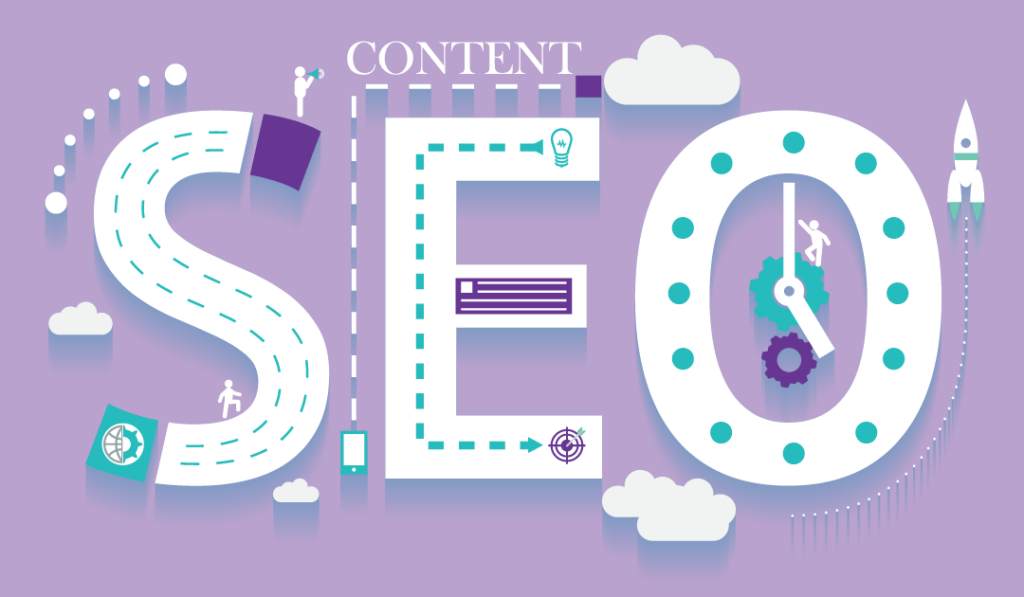
Many people think it’s only text-based content like blog posts and web pages that can be optimised for search engines. But, as my previous explanation will no doubt illustrate, visual and audio content can also show up in search results and can therefore be subjected to an SEO treatment. The descriptions of software programs and apps can be optimised too.
And, while it’s more common to optimise content that’s published on a business’s website, SEO is not restricted to ‘owned’ content platforms. For instance, LinkedIn profiles, Pinterest content and podcasts can all show up in search results, in some circumstances, so they can also be subjected to an SEO treatment albeit of a more limited variety.
TLDR summary
SEO aims to increase your sales and profits by attracting more of the right people to your website, so they can see your sales messages. To do this, it works in two ways:
- SEO helps search engines understand the value of your content, so they’re more likely to show that content to your target audience
- SEO also improves the chances that a search user will click on a search result for your content and at the same time minimises the chance that the user will click back to the search results
Two main branches of SEO combine to achieve this:
- Off-page SEO, which focusses on making websites easy to use
- On-page SEO, which focusses on helping search engines and people understand the value of each piece of content
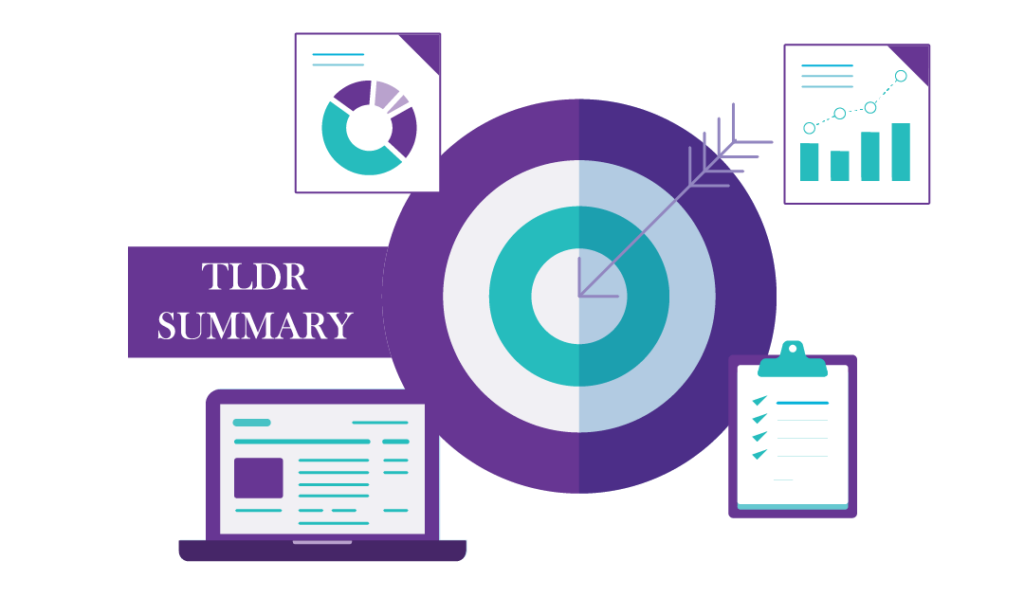
If you can master SEO, or find someone who can create and optimise your content for you, you’ll have a set of strategic marketing assets that constantly attract and convert the exact people you want as customers and clients without the continuous funding injections that paid ads require.
Got questions?
Add a comment below or get in touch with me directly and I’ll do my best to answer any questions you might have. And if you want to learn more about SEO and other related stuff, sign up for the K. M. Wade newsletter.
